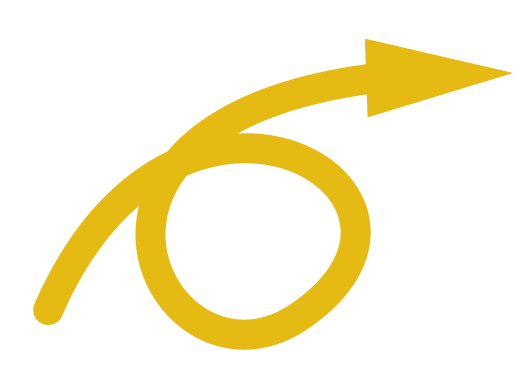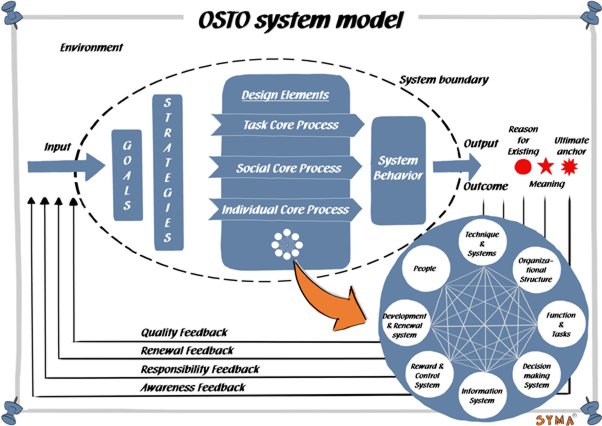more details about the OSTO-system model:
www.wikipedia.org
Linkfang
vierdrittel
„Each organisation is perfectly designed to get the results it get’s!”
Davis. P. Hanna
www.davidphanna.com
OSTO-system model
The OSTO system model describes how within an organisation, information from the environment, from the reason for existence, and from outputs/outcomes is transformed into real results through transformation processes.
We got to know the OSTO approach in 1984 through Heijo Rieckmann and Holger Krug (both at Procter@Gamble at that time). They had developed a training seminar from the original approaches of David P. Hanna – the predecessor of today’s TIO. In the following years we – together with Hejo – have further developed the model. At the end of the eighties, many training seminars at the VW Group prompted us to incorporate the reason for the model’s existence and its origins into the model and to scientifically validate the design elements (Siegfried Marks, 1991).
The strength of the OSTO system model is based on the networked consideration of the internal processes of an organisation, which consist of three core processes: Everything that goes in the desired direction are core processes. To optimize these means:
- Develop a love of detail, but not a love of detail. Understanding and shaping the interactions between the details and their effect on the whole (task core process).
- Understanding yourself in your own role and your contribution to the desired direction (individual core process).
- To form high performance teams that know what is really important and do not play off each other but rather use each other (social sore process).
According to the OSTO systems approach, there are four steps to changing an organization:
- Starting from the “reason for existing” of an organization, a thorough system diagnosis is carried out to determine the “true” state of the system, without going off with “quick fixes” in between. Conscious and unconscious networking with the environment and your needs plays a central role.
- A redesign process in which the abundance of possible small solutions is sought and allowed.
- And then it is necessary to pick out those where the greatest effect in the desired direction can be expected with the least effort.
- And then it is necessary to find those solutions that produce the least effort with the least undesirable side effects with.
The growing demand in the market then led to the foundation of OSTO Systemberatung by Renate, today’s umlaut transformation GmbH. Parallel to this, Klaus has supervised more than 40 dissertations (PhD Theses) in his work at the RWTH Aachen University, in which the OSTO approach was further developed and applied in various fields.
For us it has become the essential orientation map to better understand and control complex and dynamic organizations.

